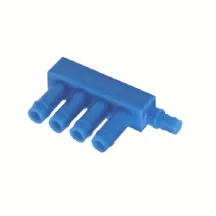Toilet Leaks, Retrofits, and Replacements
Toilets are the main source of water use in the average home, so learning how to take care of your toilet can mean real water savings – it can also help keep your water and sewer bills in check. You can save water at home many ways, whether you’re learning how to check your toilet for leaks, wondering how to retrofit (add new parts to) an older toilet so that it uses less water per flush, or thinking about replacing an inefficient toilet.
Skip to toilet leaks, toilet retrofits, or toilet replacements.
Check for leaks in your toilet tank
Leaking toilets can waste thousands of gallons of water a month, leading to higher water and sewer bills. Sometimes toilet leaks are easy to hear, but many times they can be silent, making them easy to miss. Follow these steps to check for leaks in your toilet tank without getting your hands dirty. These instructions are also available as a PDF in English and Spanish.
Reach out to your water provider to ask for dye tablets or strips – they may offer them to customers for free.
Here’s how to check your toilet for leaks:
- Remove the toilet tank lid.
- Drop one dye tablet, dye strip, or 10 drops of food coloring into the tank.
- Put the lid back on. Do not flush.
- Wait 20 minutes.
- Check your toilet bowl. If you see colored water, you have a leak. If not, you don't.*
The next time you flush your toilet, the dye will be visible in the bowl. Don’t worry – it's not a leak, and the dye won't stain your toilet.
What to do if you find a toilet leak:
If you rent, let your landlord know that your toilet leaks right away. If you own your home, it is likely that you can fix your toilet for about five dollars by replacing its flapper valve (see how to do this with this video from our friends at Seattle Public Utilities). If you don’t feel comfortable doing this work yourself, you will need to hire a plumber to do it for you.
Watch these how-to videos to learn how to identify and fix common leaks at home:
Identifying Common Toilet Leaks
Fixing a Toilet Leak
Replacing your old toilet with a High Efficiency Toilet makes sense.
Older toilets can use 1.6, 3.5, 5, or even up to 7 gallons (!) of water with every flush. Replacing an older model toilet with a new high efficiency (HE) toilet that uses only 1.28 gallons per flush (GPF) can greatly decrease your household's total water usage. Here are some benefits to replacing your toilet:
- If you decide to upgrade, look for the WaterSense logo (think Energy Star, but for water savings). To earn this label, toilets must meet rigorous criteria for performance and must use no more than 1.28 GPF. Only HE toilets that complete the third-party certification process are able to earn the WaterSense label.
- HE toilets are widely available at home improvement and plumbing stores, and typically cost about $100 - $400 plus installation fees up front. However, a water-efficient toilet pays for itself in six months to five years (depending on the cost of your toilet and your household's annual water and sewer costs). Use this website to find information on which toilets perform best.
- Your water provider may offer rebates! You could receive anywhere from $40 - $100 off your purchase.
What about retrofitting older toilets?
In some cases, older toilets (those that use 3.5 gallons of water per flush or more) can be retrofitted so that they use less water per flush. Retrofitting can be accomplished using different methods to reduce the amount of water needed to fill the toilet tank. These methods are not recommended because, while they shrink the tank, they don’t shrink the bowl, leading to the risk of having to flush twice.

If purchasing or installing a new toilet is not an option, one of the easiest retrofits is installing something called a fill cycle diverter (pictured above). The fill cycle diverter is a simple plastic device that directs more water to the tank and less to the bowl while they refill. This way the tank and bowl finish filling at roughly the same time and water isn’t wasted while one runs water while the other one fills. Once installed, a fill cycle diverter will save about half a gallon of water with each toilet flush. The video below walks through the steps for how to retrofit your older, inefficient toilet.
